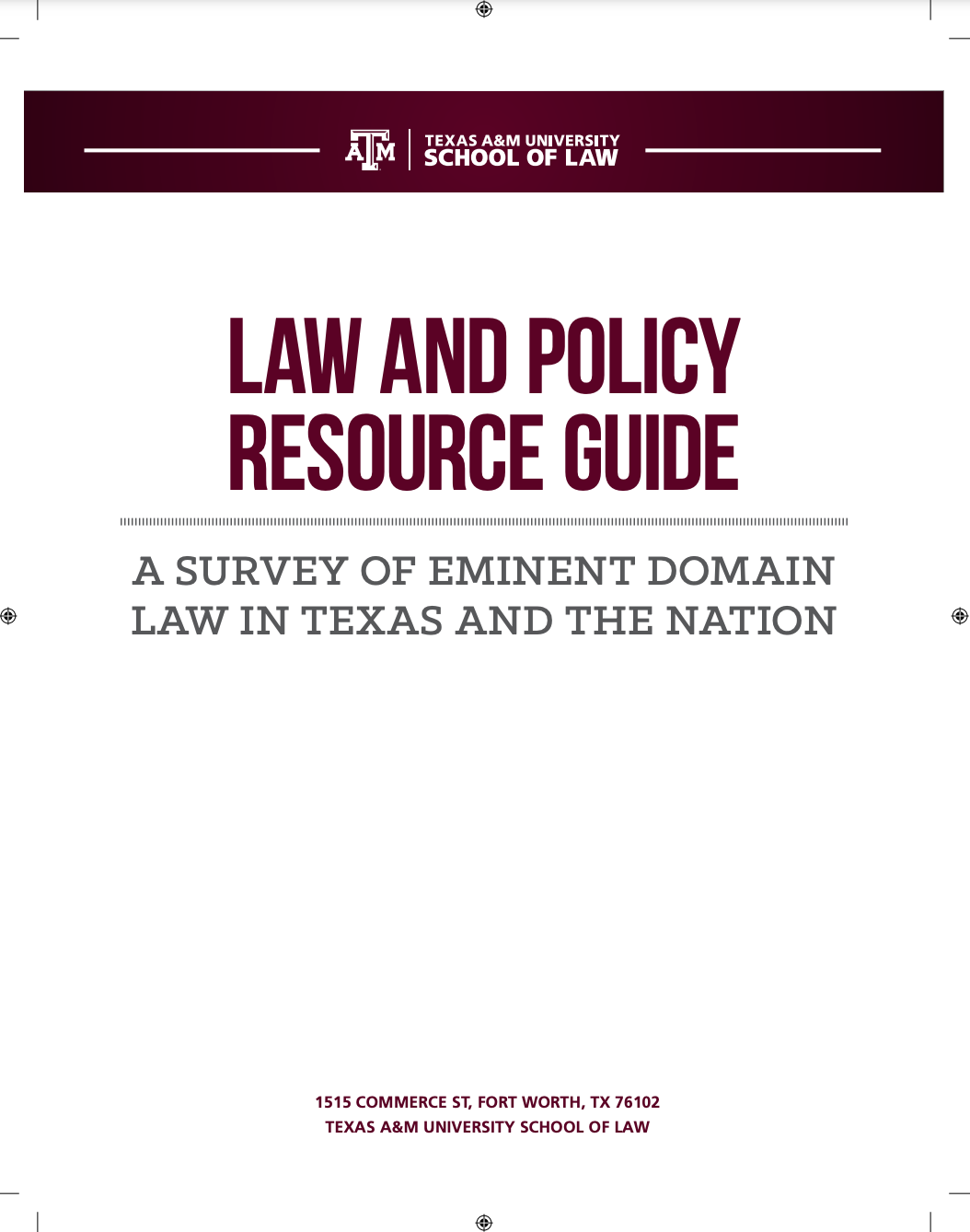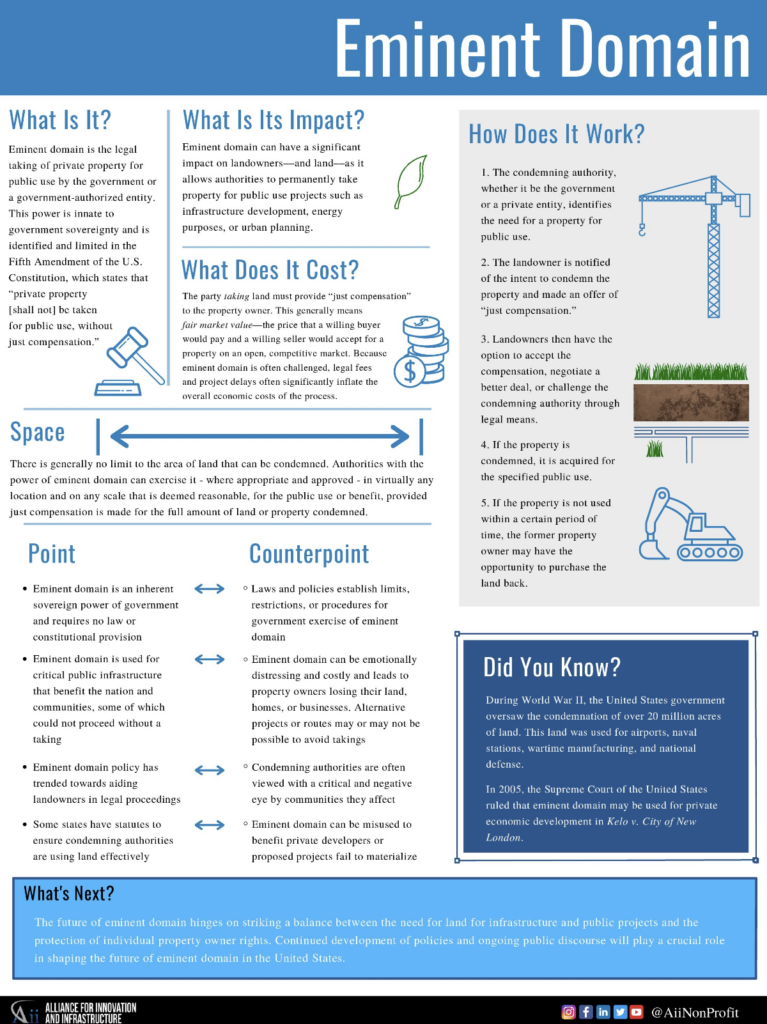Background
Eminent Domain is the taking of private land by or with a delegated right or power from the government. It is permitted by the Fifth Amendment to the U.S. Constitution, which requires the land acquisition be for the public use and that just compensation must be paid to the property owner.
The process of eminent domain, appropriation, or condemnation has been used in the United States for critical infrastructure projects throughout the country’s development. Roads, bridges, power and water services, pipelines, and other public goods often cut through private land or require easements to connect individuals to necessary services.
The process is legally complicated, varies by state, and is highly controversial. Private property is a cherished bedrock of individual liberty espoused by the U.S. Constitution, and yet public infrastructure is a necessity for modern life, capable of serving millions of people and increasing their quality of life. With strong arguments on all sides, and livelihoods impacted at every turn, the eminent domain process cannot be ignored by those working to rebuild American infrastructure and improve public safety.
The Challenge
The primary challenge of eminent domain is its limited approach to problem solving amidst its controversial nature. Beyond that, information asymmetries often lead landowners to accept unjust compensation, in addition to losing their cherished land or homes. On the other end, builders who know the value of their project often struggle to proceed as individuals and activists put up roadblocks at every turn.
On top of this, through a line of cases defining the power more broadly, the Supreme Court in Kelo v. City of New London, ruled that eminent domain used for private economic development satisfies the public use requirement. This opened the door to many projects beyond traditional infrastructure like shopping centers or commercial spaces, provided governments facilitate the taking and follow an economic development plan. Many states, however, limited the use of eminent domain for economic development.
The public reaction to Kelo spurred an extraordinary series of legislative efforts to reform eminent domain in forty-six states in the two-year period following the decision, some, but not all, of which became law. Since this virtually unprecedented wave of reform efforts, the issue has continued to bubble up in many state legislatures from time to time, as states struggle with striking the balance between public needs and private property.
In addition to the controversial aspect of eminent domain, another challenge is the variety of approaches and precedents at the state level. There are at least seven major components of eminent domain: (1) Awarding of Attorneys’ Fee; (2) Compensation and Valuation; (3) Procedure Prior to Suit; (4) Condemnation Procedure; (5) What Cannot be Condemned; (6) Public Use & Authority to Condemn; and (7) Abandonment. Each presents its own challenges and nuance.
The Solution
Eminent domain is constitutional, but that does not make it the right tool in every instance. Further, it cannot be praised or denounced outright. When the issue arises, cooperation and problem solving are essential. Governments, utilities, and any other builder must work with landowners and understand the legal and policy regimes on the ground.
The Alliance for Innovation and Infrastructure (Aii) has compiled a clearinghouse of eminent domain law, policy, and practice across all 50 states. This is a neutral place for problem solvers to come together. Along with a team of advisors, Aii has generated and maintains a resource for practitioners and policymakers to better understand eminent domain in their state and across the United States. With comparative tools, legislative history, key vocabulary, and expert interviews, this eminent domain solutions center offers a dynamic view into the process of eminent domain.
Only by grappling with a clear-eyed view of the practice, and seeing all the approaches can we arrive at a better workable solution in a particular location. Lawmakers should study this resource to see what they can learn about their own laws and those in other states.
Featured Works Below
Policy Blog
Policy Briefs and White Papers
Did you know that Eminent Domain is a brand new area of our research? Don’t worry, we will have new resources available soon! In the meantime, check out the outside report below from Aii Advisor Andrew Morriss, PhD.

Outside Resource: Law & Policy Resource Guide
While Aii researchers are hard at work creating a new database of eminent domain law and policy, check out this outside resource from Texas A&M University School of Law. Law and Policy Resource Guide: A Survey of Eminent Domain Law in Texas and the Nation.

